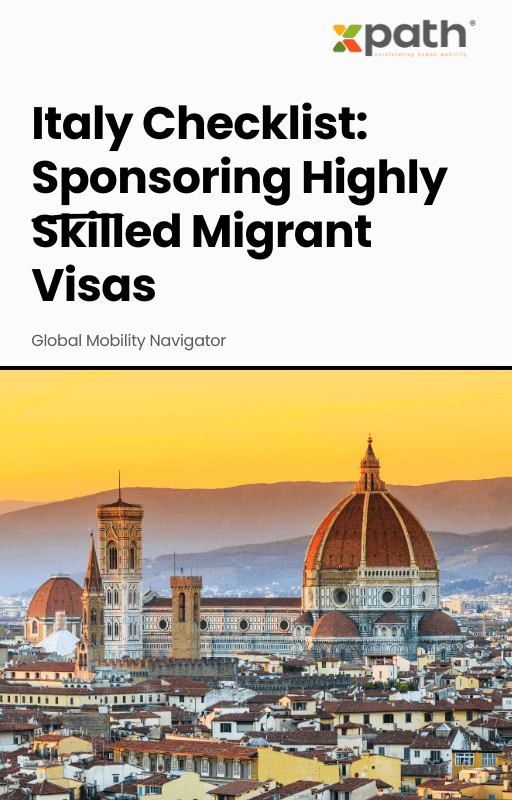Italy Checklist: Sponsoring Highly Skilled Migrant Visas
Grab a copy of a guide to international employee relocation
View E-bookOrganizations are increasingly looking for innovative solutions to streamline operations and maximize efficiency. One of the most effective ways to achieve this is by integrating chatbot technology into Human Resources (HR) processes, particularly in addressing policy-related questions. This technological advancement not only saves time but also enhances the employee experience by providing quick, accurate information about HR global mobility policies.
The role of HR departments has evolved significantly over the years, from handling administrative tasks to playing a strategic part in business growth. However, one constant challenge has been managing and disseminating information related to HR policies, especially those concerning global mobility. This is where chatbots come into play, offering a robust solution to handle repetitive queries, reducing the burden on HR professionals, and allowing them to focus on more strategic initiatives.
xpath.global is a platform designed to transform the way HR departments manage global mobility policies. By uploading the policy documents into the xpath.global portal, organizations enable employees to interact with a chatbot to receive precise information tailored to their specific needs. This interaction model not only streamlines the communication process but also ensures that employees have access to the most up-to-date information about their assignments.
One of the most significant advantages of using chatbots in HR is the remarkable time savings they provide. Traditionally, employees would need to contact HR representatives for policy-related questions, which could be time-consuming for both parties. With a chatbot, employees can quickly access the information they need without waiting for HR personnel to become available. This shift allows HR teams to allocate more time to critical tasks that require human intervention and strategic decision-making.
In the modern workplace, employees expect immediate access to information. Chatbots fulfill this expectation by offering 24/7 availability and providing instantaneous responses to policy inquiries. This level of accessibility not only improves employee satisfaction but also empowers them to make informed decisions regarding their assignments and mobility.
HR policies can be complex and are often updated to reflect changing regulations or company objectives. Manually communicating these changes can lead to discrepancies and misunderstandings. By utilizing a chatbot, organizations ensure that all employees receive consistent and accurate information. The chatbot is programmed to provide responses based on the most current data available, minimizing the risk of human error.
Implementing a chatbot system for HR policy management is a cost-effective solution compared to traditional methods. By automating the handling of routine queries, organizations can reduce the need for additional HR staff, leading to significant cost savings over time. Moreover, chatbots can handle multiple inquiries simultaneously, further enhancing operational efficiency without incurring additional labor costs.
The first step in implementing chatbot technology is to identify the key policies and information that employees frequently inquire about. This may include global mobility policies, assignment details, and compliance requirements. By focusing on these areas, organizations can ensure that the chatbot is equipped to handle the most common queries effectively.
Once the relevant policies are identified, they should be uploaded to the Xpath.Global portal. This centralized database serves as the foundation for the chatbot’s knowledge base, ensuring that employees receive the most accurate and up-to-date information.
To ensure optimal performance, the chatbot must be trained to understand various types of inquiries and respond appropriately. This training involves programming the chatbot with specific keywords and phrases, as well as developing a comprehensive response library. Additionally, continuous updates and improvements are necessary to keep the chatbot aligned with policy changes and employee needs.
The integration of chatbot technology into HR processes represents a significant step forward in optimizing efficiency and improving the employee experience. By utilizing platforms like xpath.global, organizations can streamline policy management, provide accurate information, and free up HR teams to focus on strategic initiatives. As chatbot technology continues to evolve, its potential to revolutionize HR operations and drive business success is undeniable.
By embracing this digital transformation, companies can position themselves at the forefront of innovation, ensuring they remain competitive in an increasingly dynamic business environment. The future of HR is here, and it is powered by the seamless interaction between employees and intelligent chatbot solutions.

Italy Checklist: Sponsoring Highly Skilled Migrant Visas
Grab a copy of a guide to international employee relocation
View E-book